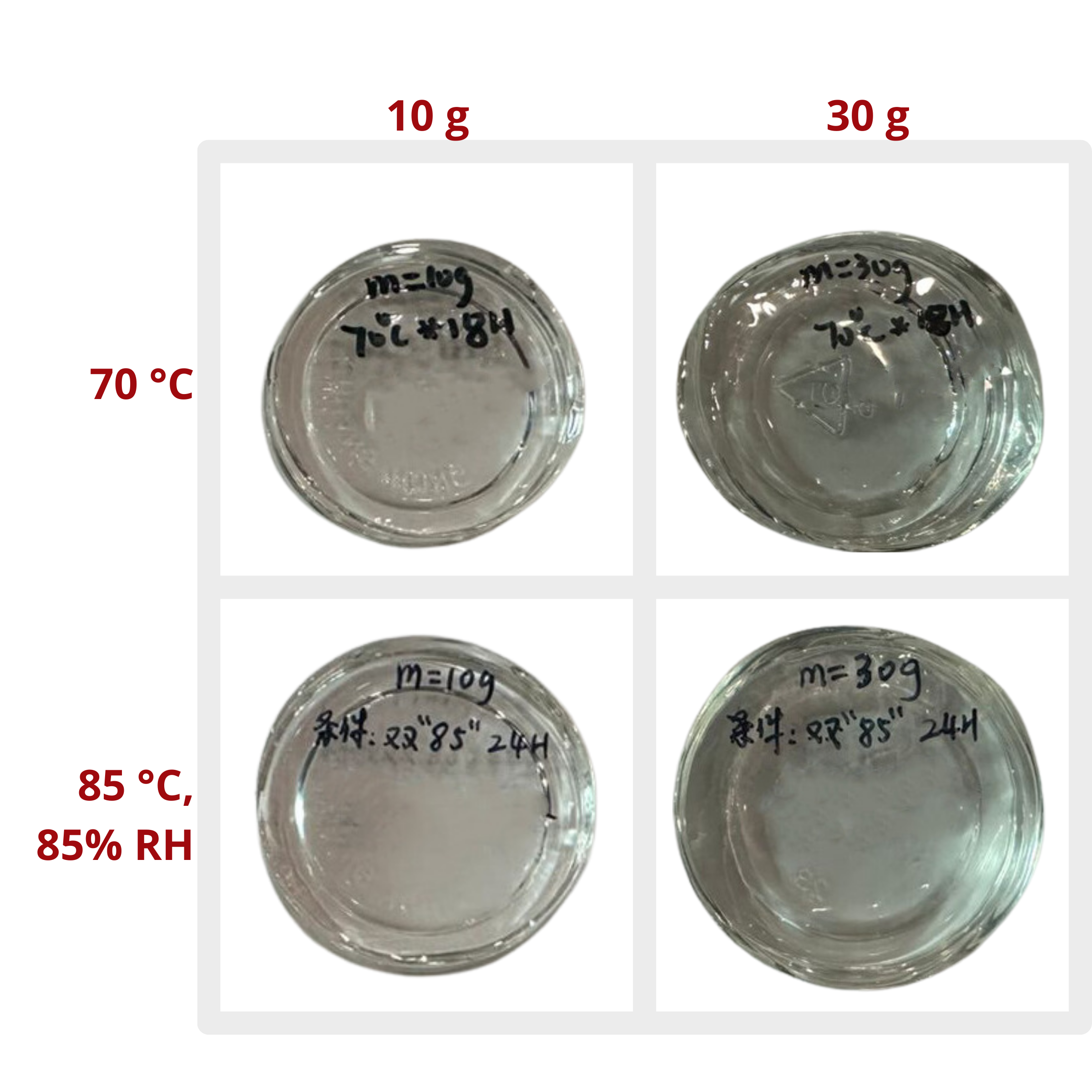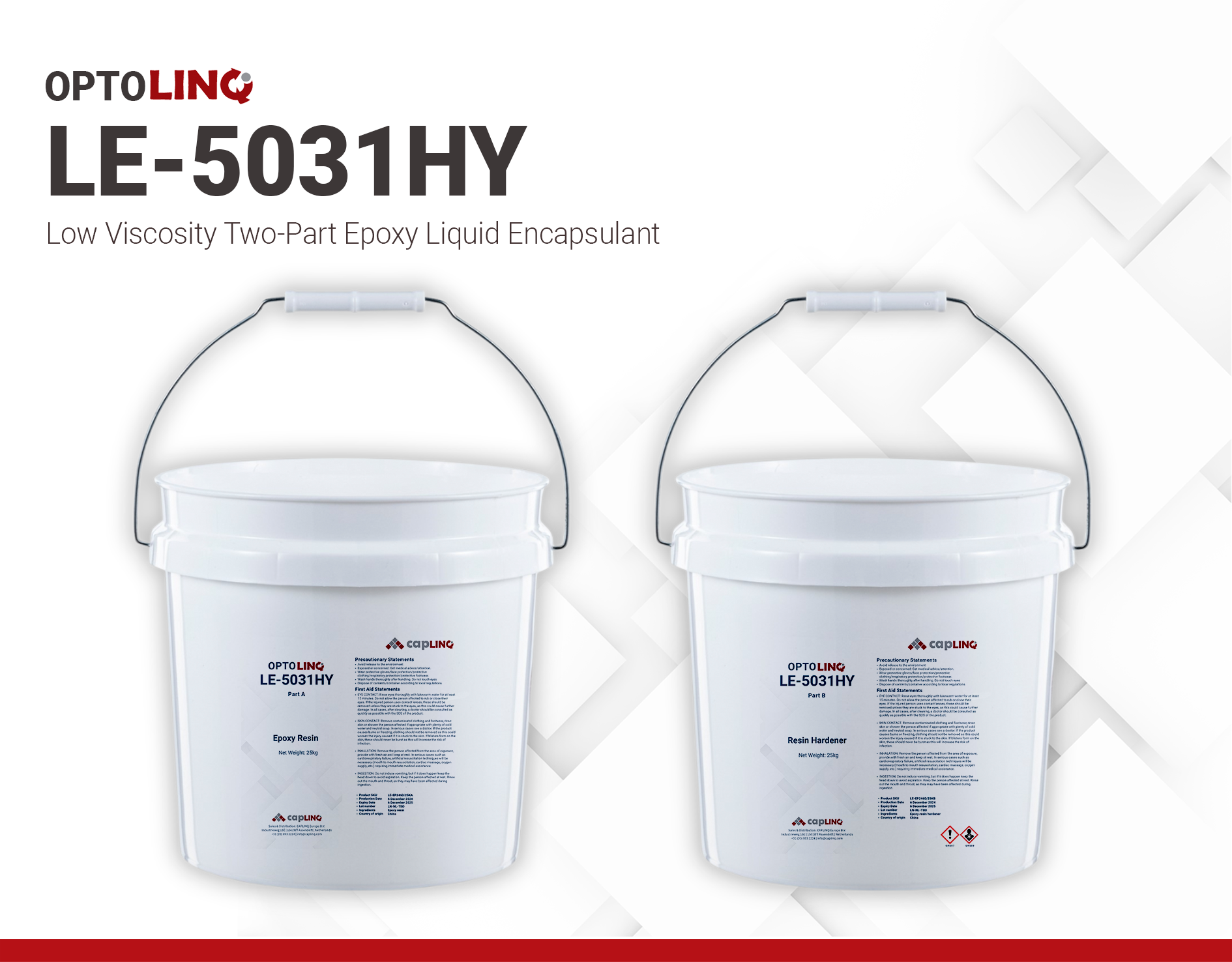OPTOLINQ LE-5031HY | Two part epoxy resin
- Low viscosity
- High transparency
- Excellent solvent, aging, anti yellowing, and thermal resistance
Product Description
OPTOLINQ LE-5031HY is a low-viscosity, two-part, halogen-free epoxy resin with high transparency and a high-gloss finish. It offers robust stability in acidic and alkaline environments, good anti-aging properties, high durability even under extreme temperatures, and superior scratch and abrasion resistance. For specific color requirements, LE-5031HY can be customized using color or opaque pastes. The LE-5031HY is the anti-yellowing resistant version of LE-5031
OPTOLINQ LE-5031HY is a suitable coating for metal and polymer surfaces, providing a polished finish and excellent surface integrity. It is the preferred choice for coating solar cell panels, transparent potting of electronic components for insulation and moisture-proofing, high-voltage coil potting, and room temperature potting of capacitors and transformers. LE-5031HY complies with ROHS and REACH standards, offering a reliable solution for encapsulation and sealing applications.
Cure Schedule
- 24h @ 25°C
- 2-4h @ under 60C°
- 1h @ 100°C
Technical Specifications
| General Properties | |||||
| Mix Ratio Mix Ratio The amount of a constituent divided by the total amount of all other constituents in a mixture | 3:1 | ||||
| Pot Life Pot Life Pot life is the amount of time it takes for the viscosity of a material to double (or quadruple for lower viscosity materials) in room temperature after a material is mixed. It is closely related to work life but it is not application dependent, less precise and more of a general indication of how fast a system is going to cure. | 1 hours | ||||
| |||||
| Physical Properties | |||||
| Viscosity Viscosity Viscosity is a measurement of a fluid’s resistance to flow. Viscosity is commonly measured in centiPoise (cP). One cP is defined as the viscosity of water and all other viscosities are derived from this base. MPa is another common unit with a 1:1 conversion to cP. A product like honey would have a much higher viscosity -around 10,000 cPs- compared to water. As a result, honey would flow much slower out of a tipped glass than water would. The viscosity of a material can be decreased with an increase in temperature in order to better suit an application | 449 mPa.s | ||||
| Chemical Properties | |||||
| Water Absorption | 0.15 % | ||||
| Electrical Properties | |||||
| Dielectric Strength Dielectric Strength Dielectric strength is measured in kV per mm and is calculated by the Breakdown voltage divided by the thickness of the tested material. Those two properties go hand in hand and while Breakdown voltage is always thickness dependent, dielectric strength is a general material property. As an example, the dielectric strength of Polyimide is 236 kV/mm. If we place 1mm of Polyimide between two electrodes, it will act as an insulator until the voltage between the electrodes reaches 236 kV. At this point it will start acting as a good conductor, causing sparks, potential punctures and current flow. | 12–18 kV/mm | ||||
| Surface Resistivity | >1.5×10¹⁵ Ohms/sq | ||||
| Volume Resistivity Volume Resistivity Volume resistivity, also called volume resistance, bulk resistance or bulk resistivity is a thickness dependent measurement of the resistivity of a material perpendicular to the plane of the surface. | >1.6×10¹⁵ Ohms⋅cm | ||||
| Mechanical Properties | |||||
| |||||
| Elongation Elongation Elongation is the process of lengthening something. It is a percentage that measures the initial, unstressed, length compared to the length of the material right before it breaks. It is commonly referred to as Ultimate Elongation or Tensile Elongation at break. | 3.6 % | ||||
| |||||
| |||||
| Thermal Properties | |||||
| |||||
Additional Information
Anti-yellowing Performance
The following optical images of cured LE-5031HY samples (10 and 30 g) demonstrate its anti-yellowing capability under two distinct conditions: exposure to 70 °C for 18 hours and to 85 °C at 85% RH for 24 hours.

Recommended Curing Conditions
Cure at 25 °C for 24 h or at 100 °C for 1 h.
These guidelines offer recommended curing parameters. Define the exact curing parameters to align with your product specifications.
Precautions for Use
- Follow the recommended mixing ratio (3:1) precisely.
- Make sure to stir the mixture thoroughly. Use the mixture as soon as possible.
- When the relative humidity >85%, the solid surface can absorb moisture from the air, producing a white fog. Room temperature curing is not advised when the relative humidity is greater than 85%. Instead, consider heated curing as a recommended alternative.
- After each use, seal the container tightly to prevent moisture from infiltrating and compromising the product's quality.
Storage and Handling
Store in a ventilated, dry, and clean environment. Keep away from fire and heat sources. It is strictly forbidden to store in outdoor environments. At proper storage conditions, Part A and Part B both have a shelf life of 180 days. Shelf life can be extended by using cold storage.



